This week, after 25 years, Conan returns to Marvel Comics. The comic adventures of Robert E. Howard’s legendary hero are being guided by one of the most seasoned creative teams at Marvel, including writer Jason Aaron and artist Mahmud Asrar, and we’ve got thoughts on the team’s debut issue. Elsewhere, Daredevil’s adventures continue with Man Without Fear #1, and we check back in with the hidden gem that is Shatterstar. Ring in 2019 with The Marvel Rundown!
 Conan the Barbarian #1
Conan the Barbarian #1
Written by Jason Aaron
Illustrated by Mahmud A. Asrar
Colored by Matthew Wilson
Lettered by VC’s Travis Lanham
Alexander Jones: AJ, Conan the Barbarian is making his long-awaited return to The Marvel Universe! What was your take on the debut issue, which brings a character from Marvel’s past back home?
AJ Frost: Alex! It’s been a few weeks, so I’m really glad to start 2019 with you on this epic and sanguinary journey with Conan the Barbarian courtesy of Jason Aaron and Mahmud Asrar. I gotta say, man, this issue was a trip. It was like I was reading something out of Heavy Metal. But also, I’d say everything really hit the mark: You can really sense Aaron’s love of the lore around this character, and he immediately makes the reader acquainted with the boundaries of the in-comic world. The artwork is killer and often excitingly lurid, and the pace never lets up from the get-go.
Jones: I feel like this is going to be an interesting discussion. I agree that the attitude and vibe of Conan the Barbarian #1 is deadly. The execution, however, is where the title lost me. While lots of the issue was really well-researched and explained, the comic still had a really standard story structure. I hate to point fingers, but I have seen Aaron employ more ambitious stories with Thor, a character who carries similar characteristics to Conan. This comic is by no means bad; my expectations were just really high for the issue.
Frost: Hmm… It’s interesting you connect Thor. I suppose that Aaron’s intent in this inaugural issue is to set the stage for those who’ve never experienced Conan in any context save for parody or secondhand memes. As an individual book, I think he really succeeds in producing a story that is intriguing enough to whet the appetite for this character that is, in many ways, an anachronism. It’s funny…there were parts in the earliest scenes of the comic that reminded me of 300 or those super-macho movies, but I guess it all really goes back to Conan. I guess what I’m trying to say is that my meta-take on the comic here is, what goes around, comes around. And I believe that’s a worthwhile endeavor to pursue, at least in terms of taking a leap to something off the beaten path.
Jones: I want to emphasize that I don’t think the story or the art qualifies in the bad category. The problem lies in the marketing for the series and how much publicity Marvel drummed up for the debut. Mahmud Asrar’s art is strikingly beautiful and Aaron’s writing is pleasant and well thought-out, just not that exciting in practice.
Frost: Well, we can’t blame the creators for the marketing, right? How would you sum up the issue then? What tagline would you give it to make sure people check it out?
Jones: I would say that this is a solid story and return to form for Conan but not an over-the-top epic story worthy of bringing an important Marvel hero back. Conan doesn’t really seem to have too many personal stakes wrapped up with the antagonists. The issue lies in the physical threat the bad guys carry, which is a perfectly fine Conan story for me.
Frost: Not to get too spoiler-y, but I thought the whole through-line of the book with the witch was handled excellently, and Asrar’s depiction of said witch is damn creepy and mighty fine (and almost puts this book in the realm of a horror comic, honestly).
Jones: This script actually carries the beats of a traditional noir story pretty closely. The issue definitely had an interesting, creepy aesthetic that I enjoyed, but overall it left me a little cold. I think Conan is going to have an interesting physical threat to battle next issue and I hope Aaron will find a way to make the plot more ambitious and centered around the protagonist. Mahmud Asrar’s art is an entirely different story.
Frost: The art is the selling point, for sure. Alex, I think we’re on the wavelength in thinking that this book looked groovy. I suppose you’re just not as jazzed about the execution of the whole package as I was. Would that be fair to say?
Jones: This is one part of a serialized story. The next issue could flesh out the plot more and I could be completely invested at that point. I think the craft from the creative team is here although the book is definitely too wordy. The script is a bit predictable for my liking. At the end of the day, I have a hard time telling what sets Conan apart as a character from other Marvel brawny heroes like Hercules and Thor.
Frost: All cut from the same mythological sackcloth! So, what’s your verdict here?
Jones: I think if you are curious about the property and like Aaron or Asrar you should BROWSE the title.
Frost: I really enjoyed the issue and thought this was a solid re-introduction to the world of Conan. I’m giving this one a BUY.
Final Verdict: AJ awards Conan the Barbarian #1 a BUY, while Alexander says BROWSE!
 Man Without Fear #1
Man Without Fear #1
Written by Jed MacKay
Illustrated by Danilo Beyrouth
Colored by Andres Mossa
Lettered by VC’s Clayton Cowles
Alexander Jones: Joe, after the events of ‘The Death of Daredevil’ the status of The Man Without Fear is in flux. What did you think about the debut which directly addresses Matthew Murdock’s new lease on life?
Joe Grunenwald: I haven’t been following what’s going on in ol’ hornhead’s life since Mark Waid and Chris Samnee left the series, so I went into Man Without Fear #1 pretty fresh. I like Daredevil, and I think this was pretty accessible, but also that it retread a lot of ground that’s already been covered with the character. What did you think?
Jones: This issue and probably this mini-series can both be considered filler. What writer Jed MacKay and artist Danilo Beyruth deliver in this story is a noir-influenced fever dream. I really enjoyed the issue overall, but this is the kind of story where I can definitely appreciate it despite some of the blatant flaws that you mentioned. What I like about the comic is how MacKay and Beyruth give the issue a personality it might not have had without their involvement thanks to the gritty visuals and interesting horror-infused aesthetic.
Grunenwald: I’d say Beyruth’s art is the best thing going for this comic. From the beginning, he creates a mood that permeates everything in the story, whether it’s in the real world or within Matt Murdock’s head. His figures have a Klaus Janson-like quality to them that suggests the feel of a classic DD story, but the coloring and the settings make everything feel just a bit off, in a good way. I really enjoyed the visual aspect of the issue.
Jones: During author Charles Soule’s run, he and artist Ron Garney contributed a much different style to Daredevil than Waid and Samnee had. It is great to see Man Without Fear embrace that style and go a little bit further with it. The coloring was even darker than usual, and added in horror elements. The script also gets some points for delving deep into Murdock’s personal history as Daredevil. I remember a couple stop-gap mini-series for the character not going over as well as this one does. That being said, the next issue really has to shift gears and pick up the pace a little bit to keep readers interested. It is also hilarious to compare this with the wild, slightly similar story content in Marvel Knights 20th. Matthew Murdock has experienced lots of out-of-body experiences full of dread over the past couple of months between the two titles.
Grunenwald: Agreed; if the next issue is another coma-induced hallucination, I’ll probably tap out and wait for Chip Zdarsky and Marco Checchetto’s run to start. If the final page of the issue is any indication, though, I don’t think we have to worry. I also appreciated the parade of past costumes and occasionally ignored plot points for DD, even if ultimately it felt like all of that stuff didn’t really go anywhere. What was it about this book that lifted it over those other stop-gap minis you mentioned, Alex?
Jones: Beyruth’s art was really, really great. The interiors are really kinetic. It is interesting to see how slender his figures are, and how expressive they can be. The title page is one of the best in the issue and captures beautiful horror moments. There is a panel that shows Foggy reflected in a mirror that is downright sinister in how subtle it is. While the backgrounds in the comic are way too sparse, Beyruth’s figures are always bursting with energy, conveying big motion. Despite the fact that the issue has two sentences of plot, I think MacKay wisely let Beyruth go big and bold with what he contributed to the title.
Grunenwald: It sounds like we’re on the same page. I wanted more from MacKay’s script, especially given his focus on Foggy, a character I really love. If the whole issue had been a monologue of Foggy talking to a comatose Matt, I might have liked it more.
Jones: I would imagine that this comic in particular is really editorially driven and that McKay doesn’t have a lot of flexibility to tell stories with Matt. I’m willing to cut the creative team a little more slack in that respect, but then I wonder why this mini-series wasn’t a one-shot and why Marvel decided to publish it.
Grunenwald: It absolutely feels like filler until the next Daredevil series starts. I don’t necessarily object to a filler story as long as it’s interesting, but if you’re going to do it, why not experiment a little more? Or at all? Unfortunately, this is an entirely safe DD story propped up by some really nice artwork.
Jones: I would consider the issue experimental. We get some of that Catholic baggage from Murdock unfolding in a horror-tinged recap of Daredevil’s history and Beyruth goes nuts with the art. It was also nice to get a little more resolution on ‘The Death of Daredevil’ because the end of that was really, really vague. Again, I understand why you would consider the issue to be slight because it barely moves the plot forward and isn’t incredibly wild or experimental.
Grunenwald: As a jumping-on point for new or lapsed readers, it’s not very effective. I appreciate the symmetry with Matt’s origin of his apparently having been hit by a truck, though it kind of makes me laugh, which may not be the intended result.
Jones: That is supposed to be a deep plot point so I find your interpretation of the scene to be particularly amusing. Honestly, I read this and enjoyed it and would easily recommend it to anyone who is interested in the character. I would give this a BORROW. What is your verdict?
Grunenwald: It’s fine. It’s inoffensive, but it doesn’t feel essential. I don’t hate that I read it, and I liked Beyruth’s art a fair amount. I think BORROW is my verdict as well, if only so you can look at the pretty pictures.
Final Verdict: Joe and Alexander both think Man Without Fear #1 is worthy of a BORROW!
 Shatterstar #4
Shatterstar #4
Written by Tim Seeley
Illustrated by Carlos Villa and Gerardo Sandoval
Inked by Juan Vlasco and Carlos Villa
Colored by Carlos Lopez
Lettered by VC’s Cory Petit
Reviewed by Samantha Puc
By the time Shatterstar makes it to the gladiator ring to fight the Death Sponsors on Horus IV in Shatterstar #4, tensions are sky-high. His short-lived time as Queens landlord Ben Gaveedra has been ripped to shreds by none other than Gringrave, a genetically engineered gladiator from his past. With his tenants’ lives on the line, Shatterstar has to face Gringrave and the Grandmaster, the latter whom controls Horus IV — and is mostly concerned with views and ratings for his planet’s gladiator battles. Entertainment is the name of the game, after all.
In this penultimate issue, Tim Seeley’s writing hits its stride and brings the seriousness of what’s at stake fully into the light. Ben has strived to leave his past behind him, seemingly to no avail; the pain, rage and violence of his former life refuses to let him go and in this issue, he has to come to grips with that. What happens next is not only shocking, but heartbreaking — the last few pages of this issue are wildly suspenseful and the twist is well-earned. The pacing of this mini-series has stayed consistent since its debut, which makes the pay-off feel worth it in the lead-up to the fifth and final issue.
Equally well-executed is the artwork, which is flawlessly enhanced by Cory Petit’s lettering. One of the best elements of Shatterstar #4 is Gerardo Sandoval’s flashback art, which is different enough from Carlos Villa’s work to mark the time jump, but still similar enough to maintain the overall mood of the scene. The parallels between the flashback and the current fight help the story flow, ramping up the emotion in a big way. Likewise, the colors are phenomenal. Shatterstar’s world is drenched in sharply-contrasting, bright colors, which serves to increase the tension and the drama.
Final Verdict: If you haven’t been reading Shatterstar, I strongly encourage you to BUY the issues so far and catch up before the finale hits shelves on Feb. 13. Issue #4 makes the build-up feel worth it and whether or not you’re familiar with Shatterstar’s backstory, this mini-series will hit you hard and make you want to learn more about the character.
Next week we go higher, faster, further with a brand new Captain Marvel #1!


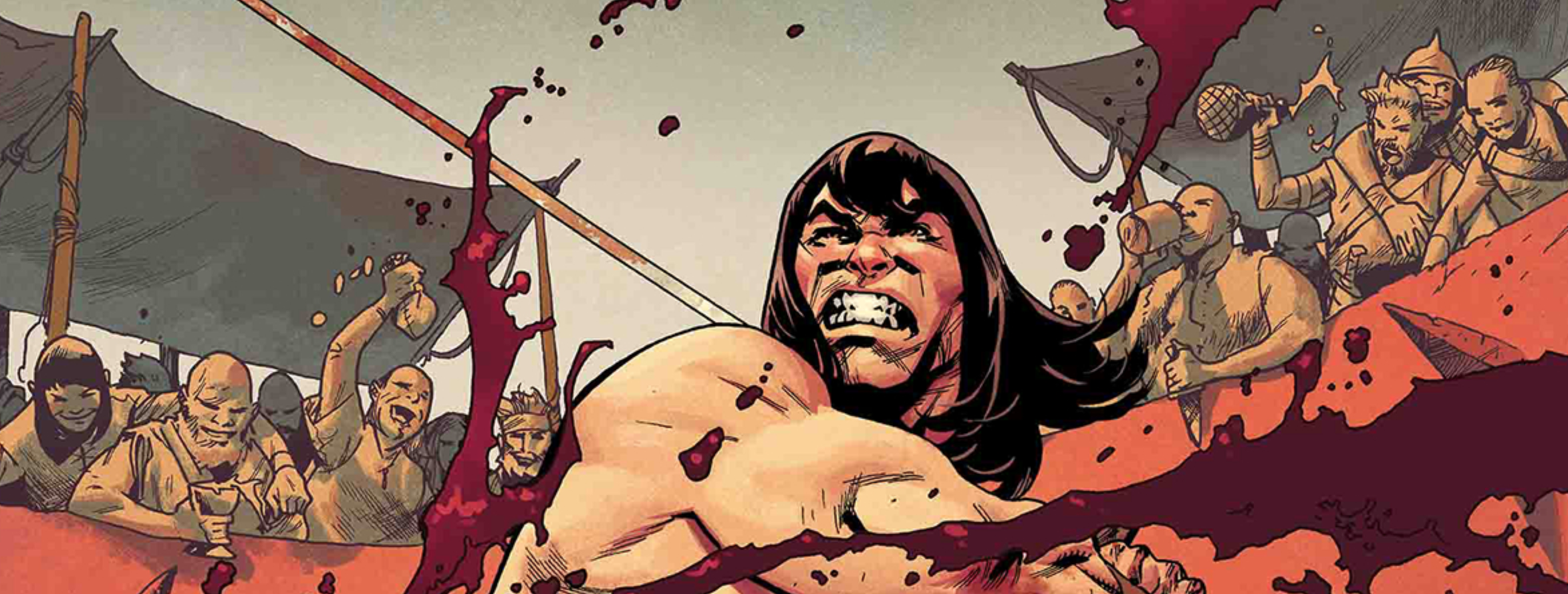
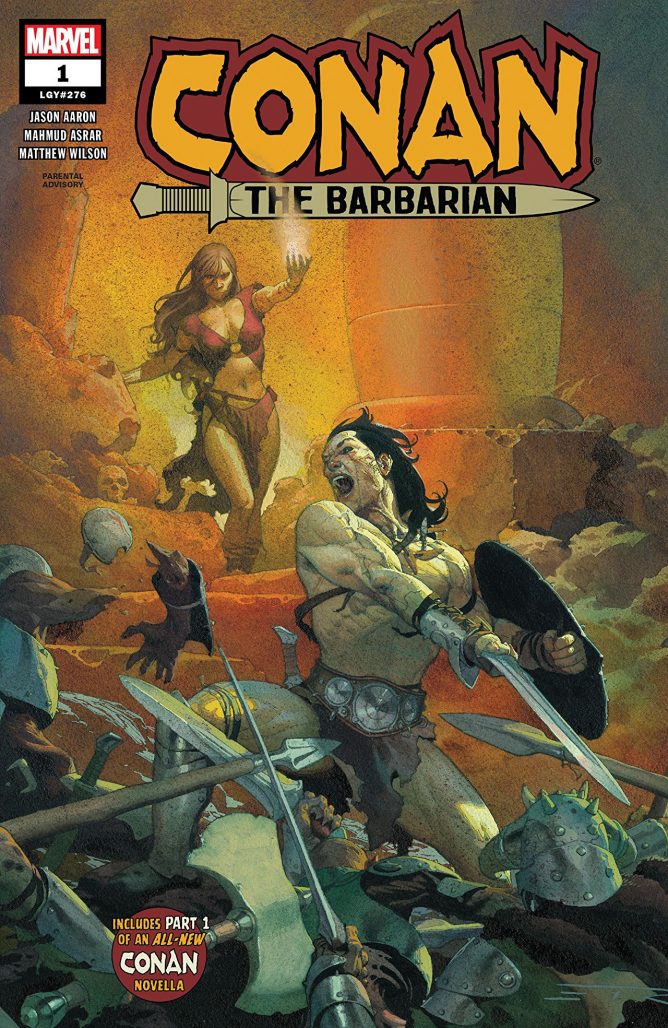 Conan the Barbarian #1
Conan the Barbarian #1
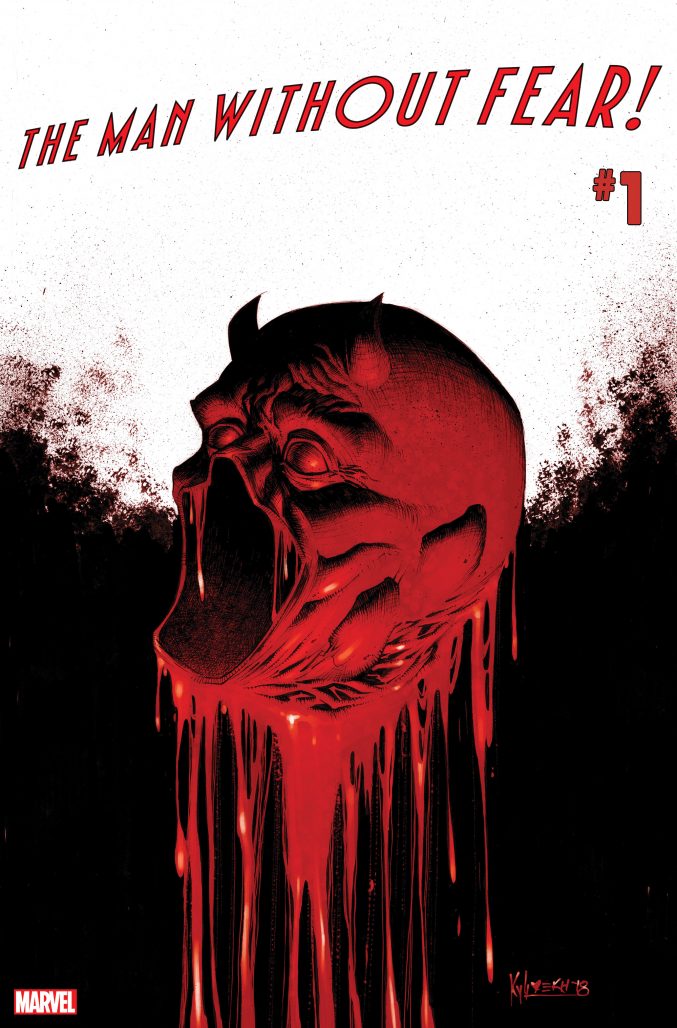 Man Without Fear #1
Man Without Fear #1
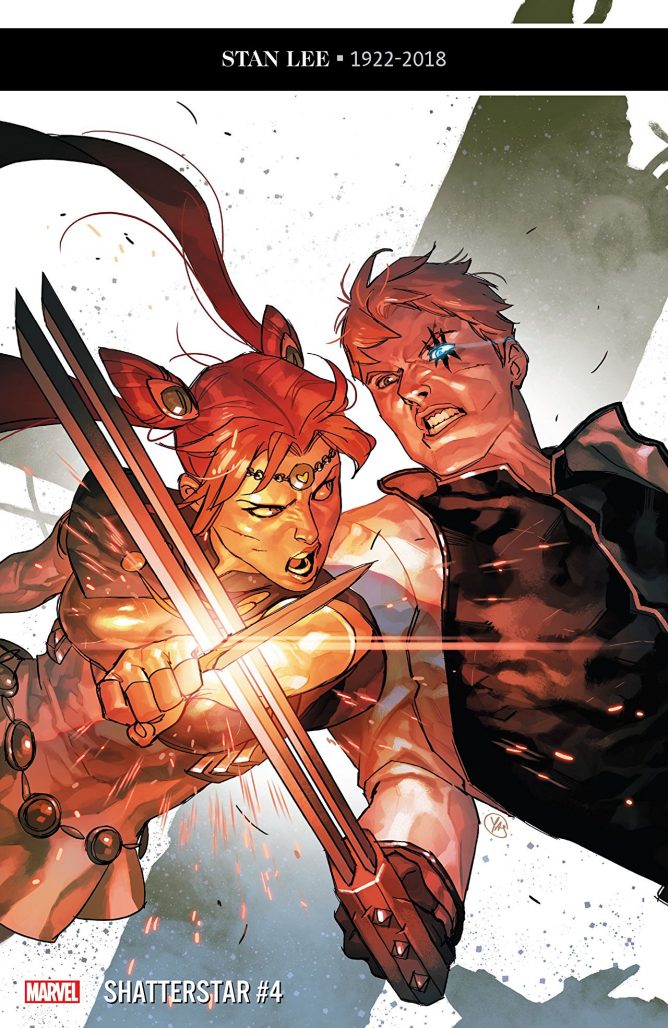 Shatterstar #4
Shatterstar #4
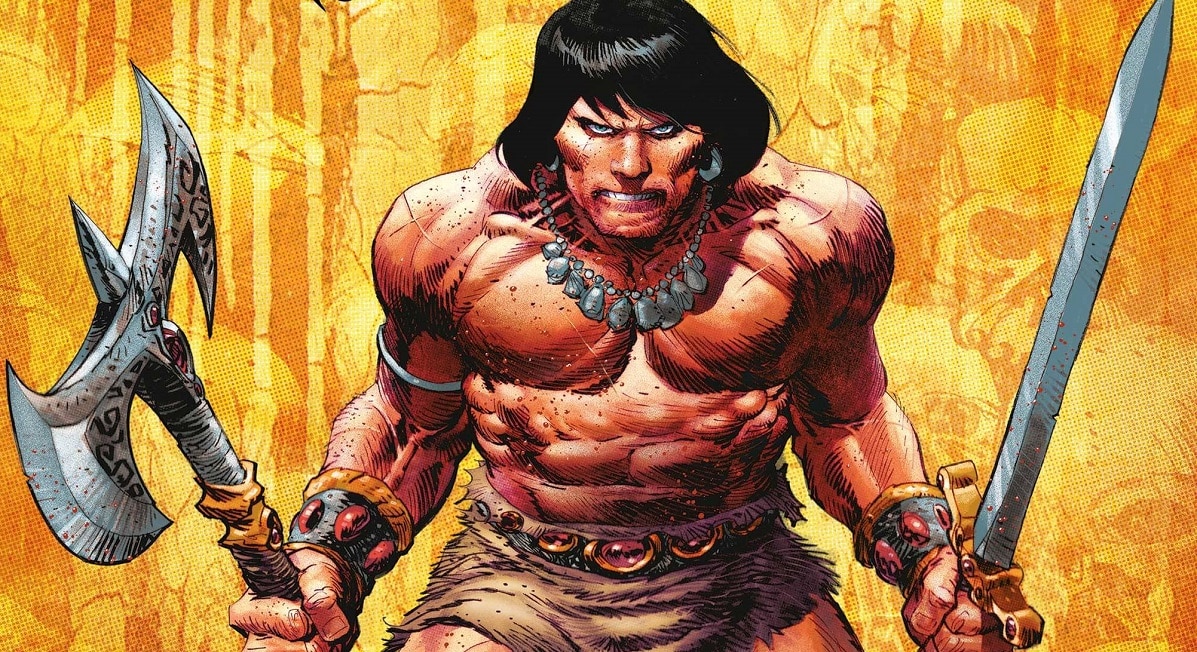

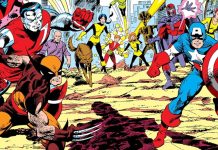



Comments are closed.